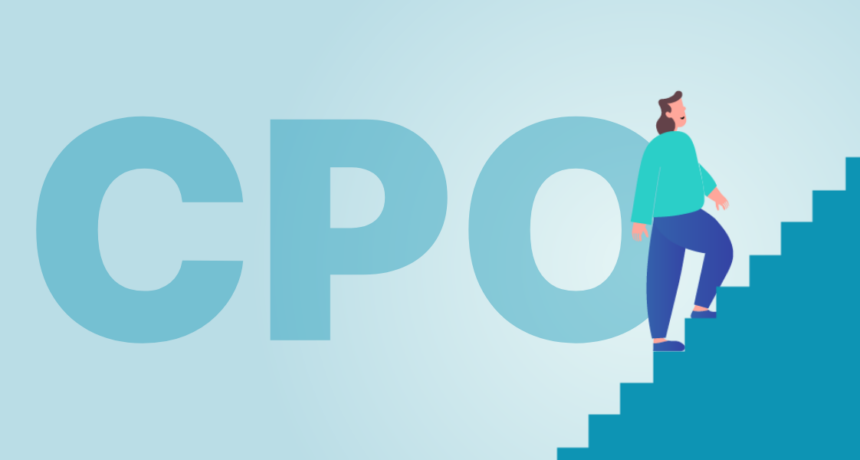An exceptional, outcome-focused product portfolio is vital to every company’s success. So as organizations grow, so does their need for a Chief Product Officer (CPO) who can rise above the day-to-day and take a more holistic view while leading the product team. In the following post, we perform a deep dive into this critical position, so you can decide how it fits within your organization or career path.
- What is a CPO?
- What does a Chief Product Officer do?
- How do CPOs differ from other product leaders?
- What skills do companies look for in a CPO?
- Does every company need a Chief Product Officer?
What is a Chief Product Officer (CPO)?
A Chief Product Officer (CPO) is an executive-level position that oversees a company’s product organization and portfolio(s) to ensure they deliver value to the customer while meeting its strategic goals and objectives. Sometimes referred to as the “Head of Product,” this is a cross-functional role responsible for designing, building, and delivering solutions and bottom-line impact.
To this end, CPOs focus on the following:
- Making strategic product investment decisions that drive outcomes.
- Building and motivating a world-class product team to deliver on the company’s vision and mission.
- Collaborating with internal stakeholders throughout the product life cycle and positioning the product organization as a strategic partner vs. an order taker.
It may help to remember that Chief Product Officers don’t build the product themselves. Nor do they design, code, or write marketing materials. Instead, a CPO connects all product-related activities to the company’s overarching strategy by collaborating with:
- Engineering for product development work.
- Marketing for positioning and messaging.
- Sales for pricing, demos, and closing.
- Customer success for continued adoption, upsell, and cross-sell opportunities.
- Finance for budgeting and identifying ways to optimize gross and net margins.
In other words, the primary job of a Chief Product Officer is to drive business outcomes by effectively collaborating with key functions involved in building and delivering meaningful products. They set a top-down strategy that balances multiple dimensions while encouraging bottom-up innovation.
What Does a CPO Do?

Chief Product Officers collaborate with the various functions required to develop products. And great CPOs apply a portfolio approach that helps them balance customers’ needs, business goals (OKRs), and engineering capabilities to achieve the best outcomes. To accomplish this challenging task, CPOs:
- Take a responsive approach to planning, strategizing, and allocating, and dynamically re-adjust in real-time.
- Work to achieve near-term results and long-term vision with limited time and resources.
- Continuously promote progress and build trust by developing one transparent source of truth to communicate and champion ideas, plans, and progression.
In organizations where the CPO role is new, this can be a challenge because they must switch their mentality from delivering features to driving outcomes. In addition, it requires a broader perspective, moving from one product to the entire portfolio and managing multiple functions. For example, Chief Product Officer responsibilities typically include the following.
Product Strategy: The Chief Product Officer outlines a comprehensive product strategy encompassing the whole portfolio. They are responsible for the “why” of the product, ensuring the product direction fulfills the company’s strategic vision and delivers meaningful outcomes.
Design and Development: The CPO may completely own product design and development in smaller organizations. Whereas at larger companies, these functions can fall under multiple leaders. For example, a Chief Technology Officer might also work with the product team, but their focus is on enablement (how to get things done). Regardless, the CPO influences both teams.
Product Marketing and Sales: Chief Product Officers represent the voice of the customer internally, communicating insights from research and analysis about the customer experience with the marketing and sales teams. They also interface with these groups when creating the ideal customer journey, from product awareness to onboarding and buying additional products and services. This collaboration focuses on customer retention and is a crucial product, marketing, and sales metric.
No matter where they get involved, the CPO aligns the product direction with the company vision. They anticipate needs and challenges and adjust responsively to changing internal and external conditions.
How Do CPOs Differ From Other Product Leaders?

Chief Product Officers are at the top of the organizational structure, leading the entire product organization, portfolio, or sometimes a portfolio of portfolios. As such, all other product leader roles and functions typically ladder up the CPO:
- VP of Product: Owns a product line or a group of products.
- Director of Product: Owns a set of product areas or a single product.
- Product Manager: Owns an individual product area. And depending on the organization, the product management function may consist of many product and senior product managers.
Chief Product Officers serve as mentors and influence the product department’s dynamics but rely on other product leaders to manage the day-to-day while focusing their time on collaborating with functional leaders to influence strategic direction by:
- Effectively communicating company goals.
- Providing visibility into roadmap strategy and planning.
- Delivering stakeholder reports to define objectives and show progress.
- Communicating the why behind prioritization decisions.
Great product portfolios only come to life through great collaboration. That is why multiple cross-functional teams must come together to deliver significant outputs. To realize the vision, the CPO helps define a long-term plan that outlines how they will turn ideas into impactful product experiences that drive revenue. This strategy must consider resourcing needs and dependencies and connect the high-level objectives and key results (OKRs) to day-to-day execution.
To bring a winning product portfolio to market, a CPO must orchestrate the efforts of all departments—communicating the vision and ensuring everyone stays aligned with the common goals.
What Skills Do Companies Look for In a CPO?
When hiring a Chief Product Officer, companies look for more than product-related experience. The CPO is a highly visible and strategic role, so this person must be capable of seeing the big picture and building healthy working relationships with leaders across all business areas. So, in addition to technical knowledge, below are the critical traits and skills most successful CPOs possess:
Leadership Skills: Chief Product Officers must motivate cross-functional teams to maximize their efforts toward achieving the company’s strategic goals. Their success depends on their ability to unify various groups to keep everyone aligned, focused, and motivated to pursue a shared vision.
Influence and Communication Skills: CPOs interface with many stakeholders, which requires clear, concise, and (sometimes) persuasive communication. From board members and Executives to product teams and customers, the CPO needs to share the product vision and plans for fulfillment continuously.
Strategic Thinking Skills: Great CPOs use strategic frameworks that guide product decisions across all levels of the organization. They define the strategic drivers, standardize prioritization efforts, and allocate resources to ensure the team can confidently pursue critical initiatives and objectives (OKRs).
Data-driven Decision Making: Chief Product Officers make decisions based on data. They identify Key Performance indicators (KPIs), measure outcomes, and use what they learn to influence the next iteration of product strategy. They also assess resourcing needs, track progress, and run what-if scenarios using real-time data. Most use a responsive approach to planning, strategizing, and allocating, which allows them to use data to adjust their plans dynamically.
Roadmap Transparency: Creating and sharing roadmaps is one thing, but most companies want a CPO who provides clear visibility into their progress, with roll-ups at all levels and by any dimension (ideally, in real-time). So, a strong CPO knows how to collect and report that information, typically with the help of a product portfolio tool.
“What it really comes down to is understanding the ROI and making sure that you get ROI from your product investments. That’s what a Chief Product Officer is going to bring to the table. They’re going to make sure that you are building the right things that will get a return for your company. And they’re making sure that you can scale appropriately with that.”
– Melissa Perri on the difference between a VP of Product and a CPO
Does Every Company Need A CPO?
Simply put, yes!
Every company needs someone championing the overall product vision and a portfolio approach because every organization’s product or product lines need to support multiple goals, segments, and themes. Product portfolio management isn’t about the size of the portfolio but rather about the craft of managing complexity and delivering the best product outcomes given constraints. Product leaders must do this work to ensure product performance.
If your company isn’t sure it needs a Chief Product Officer, consider these questions:
- Do you want to become outcome-focused and escape the build trap?
- Do you want to keep mandating initiatives or start providing strategic intent?
- Do you need a new framework that connects OKRs with Agile execution?
- Do you need to align priorities across revenue, customers, operations, and business stakeholders?
- Do you need to connect the dots between all moving pieces for real-time portfolio planning and allocation?
If you answered yes to any of these questions, you need a CPO.
The Bottom Line
The Chief Product Officer role is essential for organizations that want to deliver an exceptional product experience while being mindful of the business’s constraints. Chief Product Officers enable cross-team collaboration, drive top-down strategy, and empower bottom-up innovation so they can deliver meaningful products while achieving results. As such, a great CPO will lead an organization toward the following:
- A change in mentality from delivering features to driving outcomes.
- An emphasis on balancing customer needs, business goals, and engineering resources.
- The use of portfolio management tools for clear product prioritization, progress management, and communication.
To learn more about the CPO role, check out our 90-Day Success Plan for New Chief Product Officers named ‘Most Valuable Post of 2022’ by Product Management Today.




